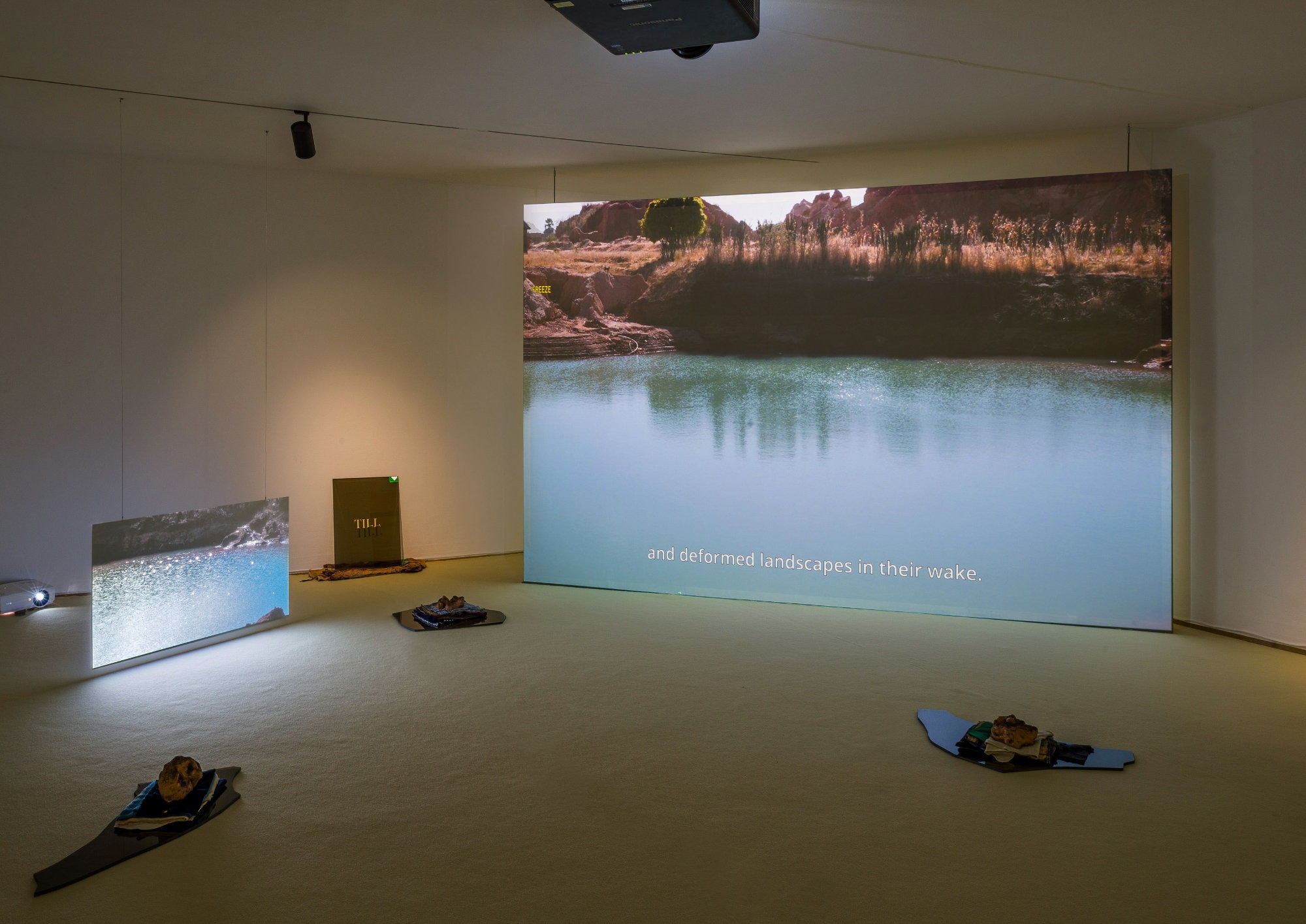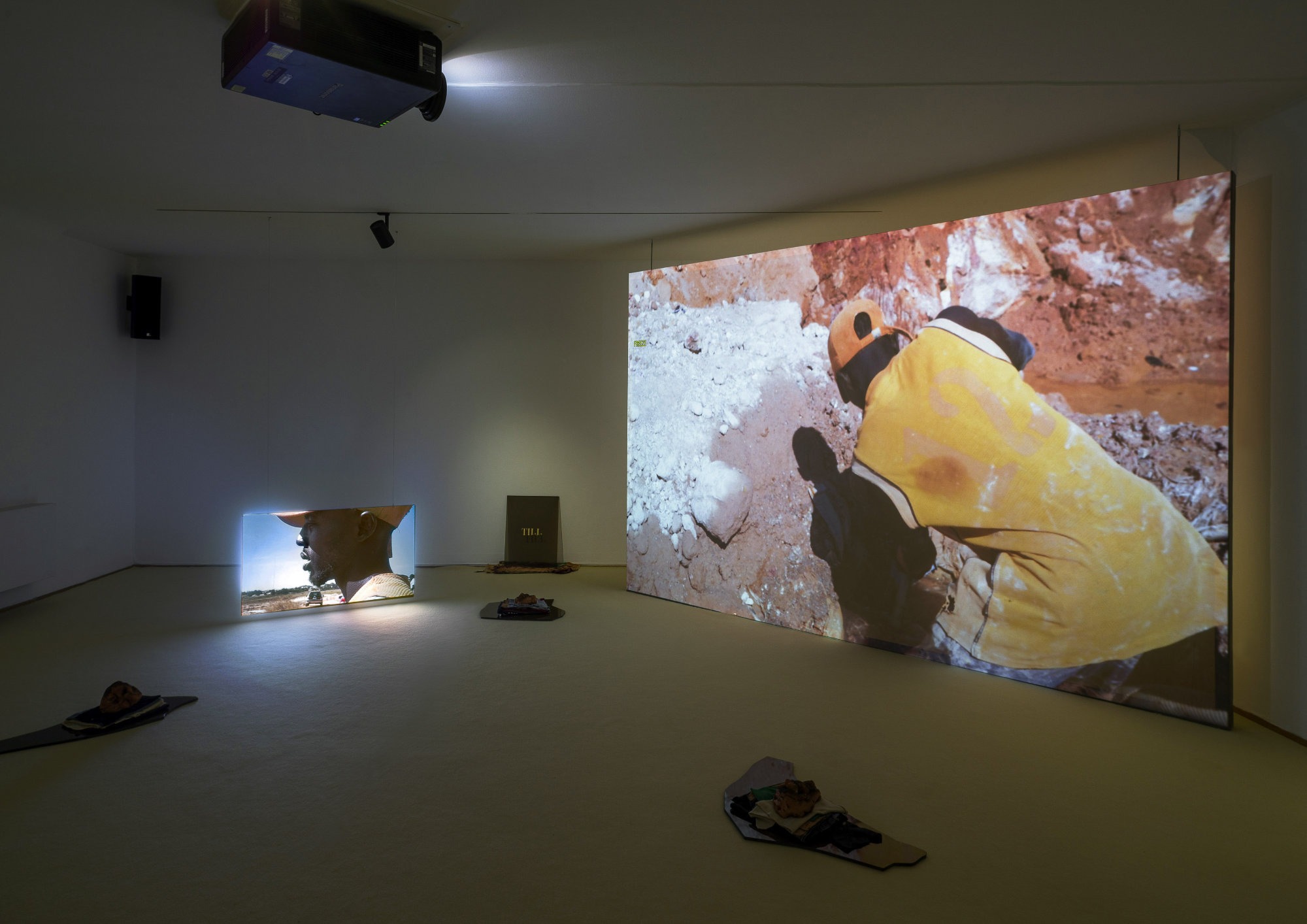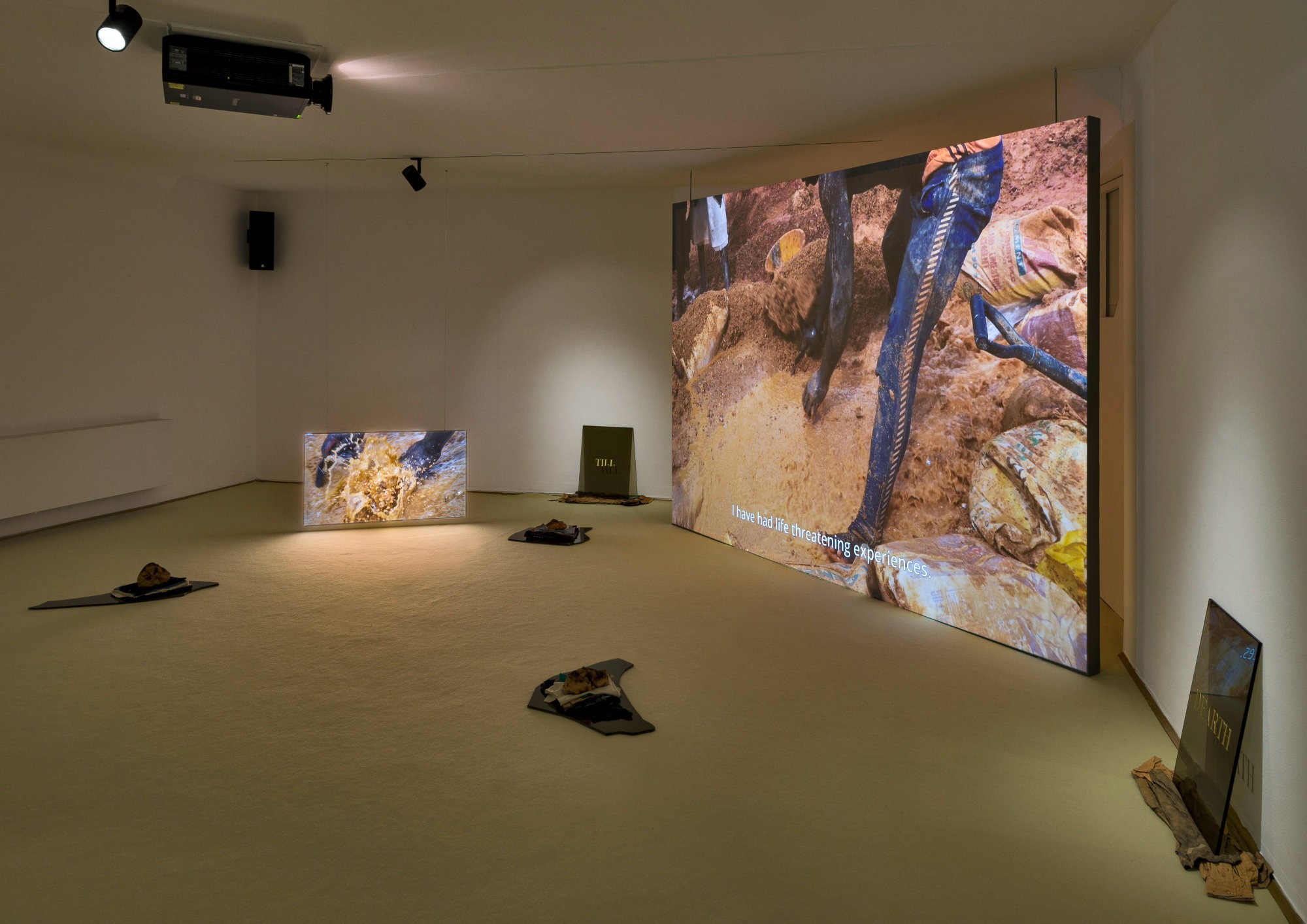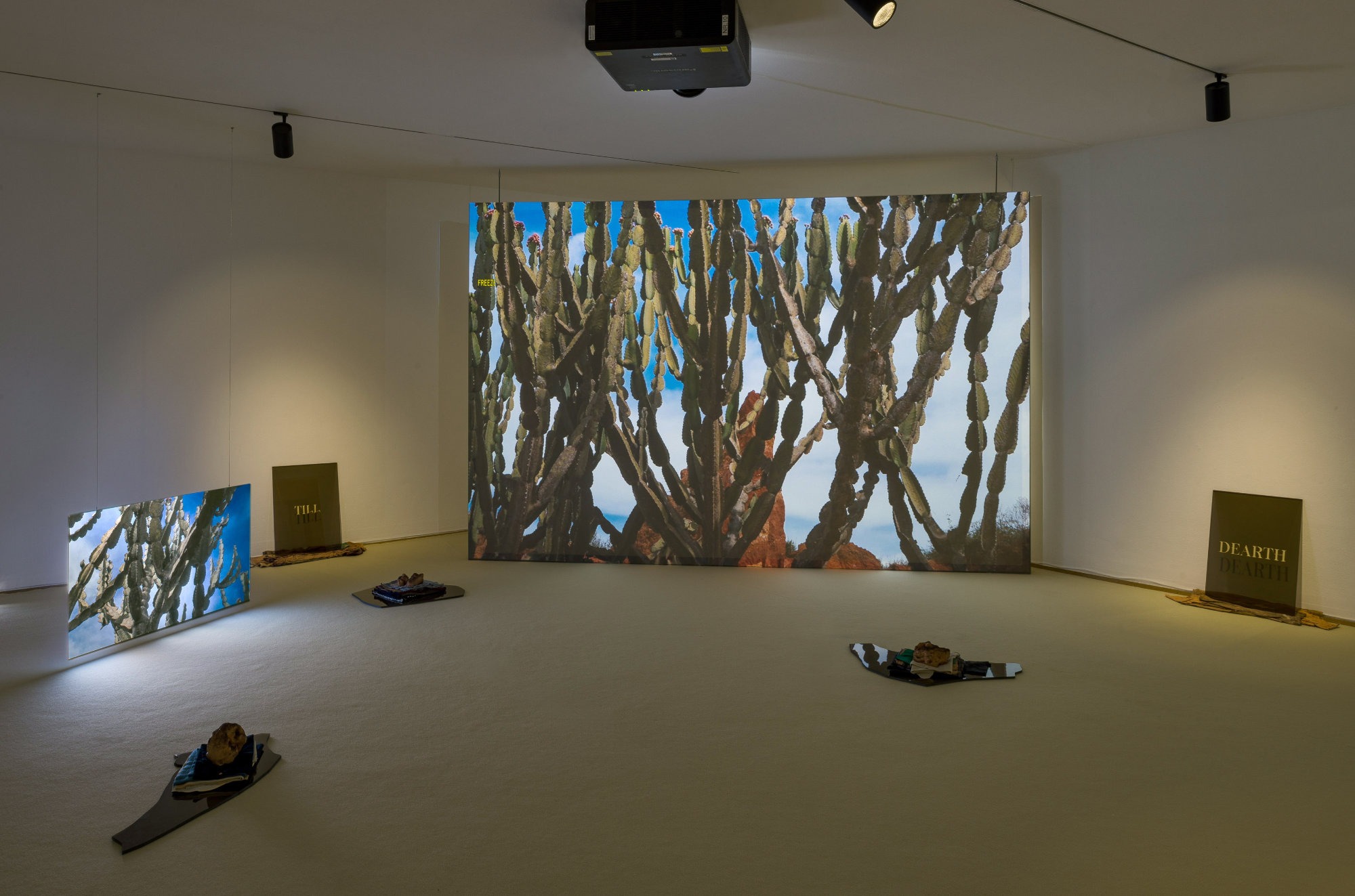Karimah Ashadu
Plateau
02 Jul - 05 Sep 2021
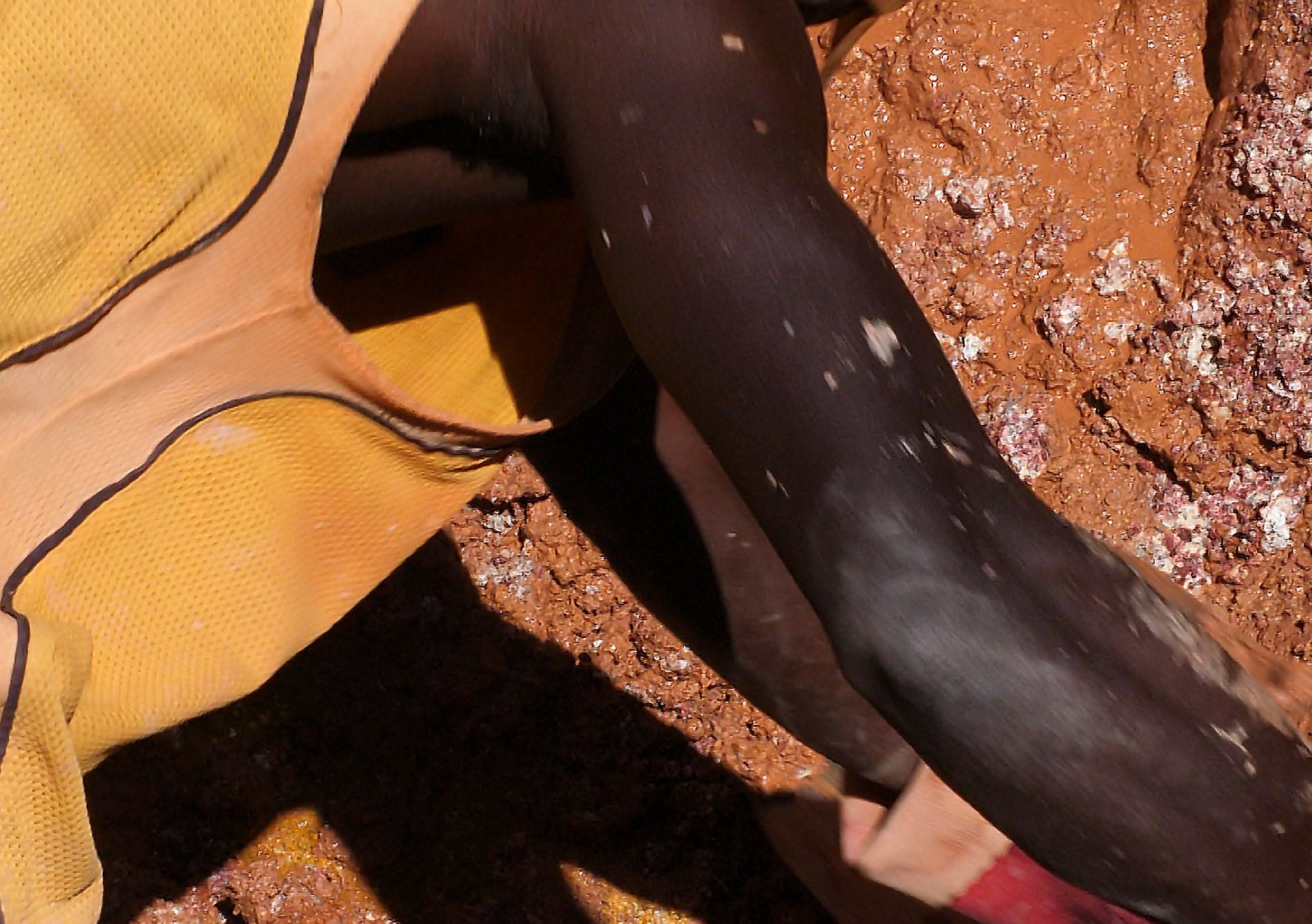
Karimah Ashadu, Plateau, 2021, film still, courtesy of the artist and Fondazione In Between Art Film

Karimah Ashadu, Plateau, 2021, film still, courtesy of the artist and Fondazione In Between Art Film

Karimah Ashadu, Plateau, 2021, film still, courtesy of the artist and Fondazione In Between Art Film
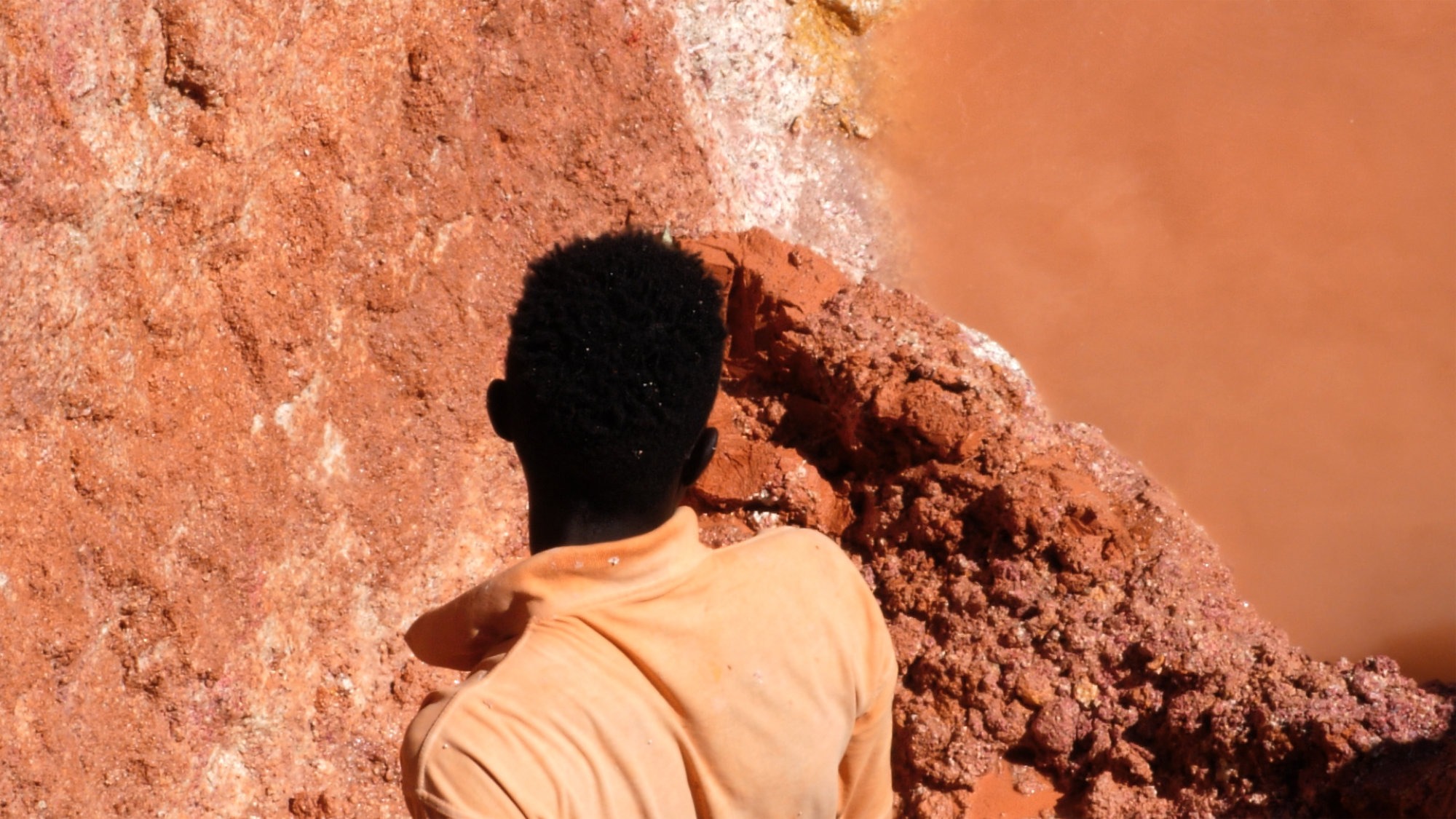
Karimah Ashadu, Plateau, 2021, film still, courtesy of the artist and Fondazione In Between Art Film
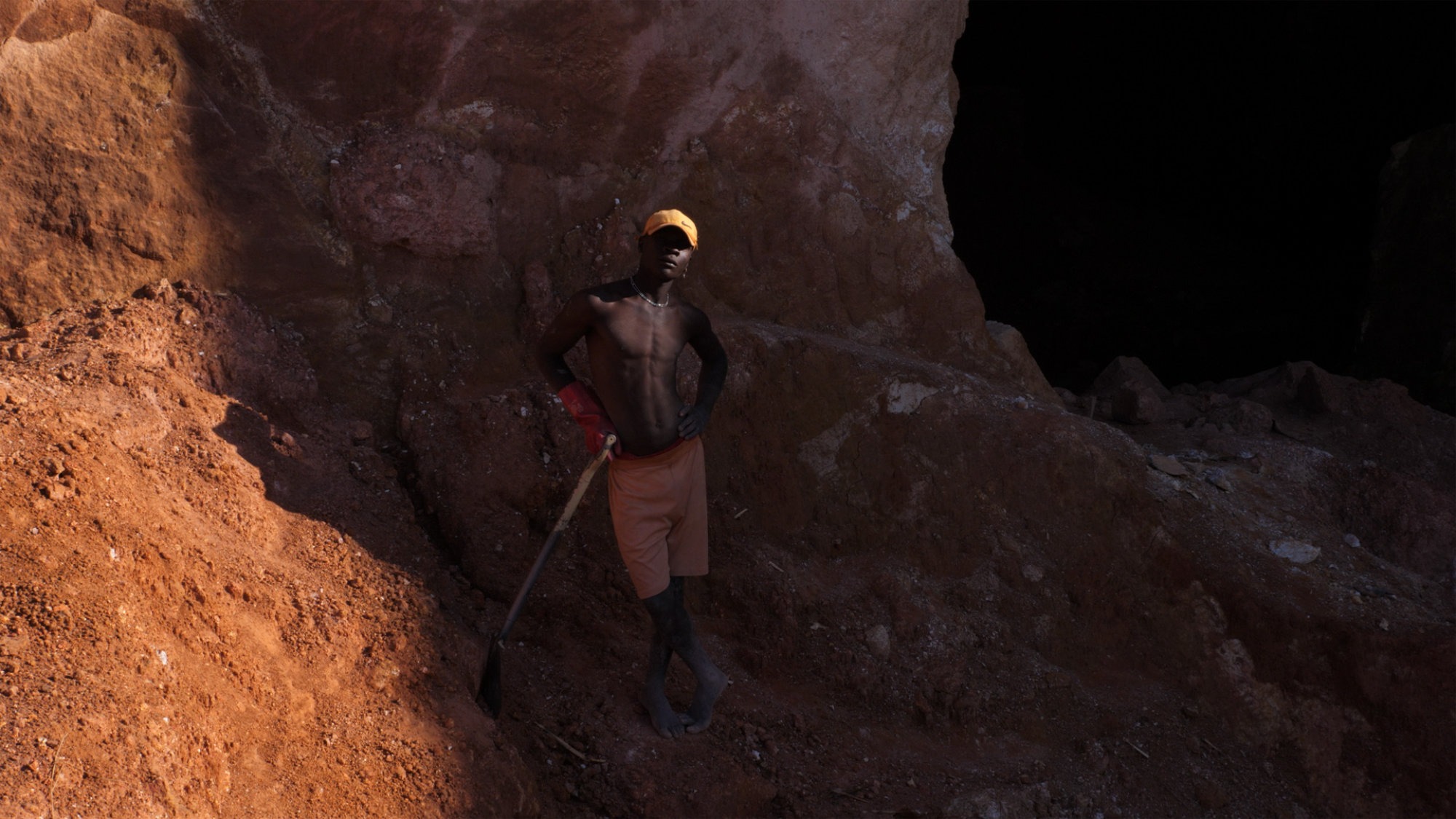
Karimah Ashadu, Plateau, 2021, film still, courtesy of the artist and Fondazione In Between Art Film
Karimah Ashadu’s practice examines conditions of living and working in the socioeconomic context of West Africa. The filmmaker and visual artist’s new film installation Plateau, which premieres at the Secession, follows undocumented workers mining for tin and columbite on the Jos Plateau in central Nigeria.
The rugged landscape dotted with manmade craters and ponds has been mined for almost three thousand years. During the colonial era, tin mining expanded into an industry that had its heyday in the 1940s; after the expiration of the International Tin Agreement in 1985, the market collapsed and the mines closed, leaving the workers jobless. Unlike earlier generations of laborers, who were forced to seek employment and surrender the riches they extracted to the colonial masters, today’s miners are self-employed. Buoyed by hopes of striking it rich, they accept the hazardous working conditions and heavy physical labor, digging through their land a second time in search of the minerals.
Without moralizing, Ashadu brings into focus the beauty in the everyday and people’s self-reliance and struggle for emancipation. The artist explains her vision for the work:
“What Plateau has taught me is that, with all my films, I’m always looking for ways to consider labor as a kind of a practice towards independence. I’m really interested in industry and economy because it makes a country what it is and how people, through work, bring the country, its values and its ideas alive. And again, this ties into the notion of independence and how that plays out today. So not just independent as a country, but with regards to individual circumstances.”
In the film, workers, villagers, and landowners speak on how they see themselves in society, their lives and traditions, and reflect on the devastation of the land, on inequities and property relations as well as risks and profits. Their testimony opens up a variety of views on the complex history of tin mining and the exploitation of the area’s natural resources. The protagonists’ voices narrate; meanwhile, the artist’s unconventional cinematographic practice charts the space between herself, the camera, and the bodies it records. Ashadu’s approach to filmmaking is grounded in observation, submitting to the anatomy of motion in order to unlock novel perspectives. Her meandering gaze engages with the mineworkers’ bodies, their hands and feet digging in the sludge, but also lingering on the rich colors of the landscape, its luminous tones of russet and ocher yellow. The cactus motif, introduced in the very opening shot, serves as a kind of guiding metaphor. The Berom people not only ascribe a vital role in the cultivation and security of the land to the plant, they also identify with its resilience and hardiness.
For the Secession, Ashadu has developed an installation that revisits and condenses various aspects of the film. Her poetic editing technique, which lets her orchestrate diverse voices, is further enhanced by the conceptual realization as a two-channel work. Brief sequences that suddenly flash up on the small screen repeatedly disrupt the narrative flow with close-up shots of hands or feet buried in mud, confronting the viewer with alternative viewpoints.
The earthy tones that characterize the film, recur in the design of the exhibition gallery and the staircase. Ashadu’s installation also encompasses two photographs reworked with clay and a series of sculptures made of clay – which the artist sourced from Jos, found clothes, tinted glass and raw tin. The engraved terms reflect the ambivalence of the workers’ strenuous and high-stake lives. Glass as a physical material, meanwhile, has immediate bearing on colonial power structures and mechanisms of visibility; as the artist observes:
“this juxtaposition of materials brings a very interesting balance between a sense of weightlessness and a grounding. The idea for glass comes from stories I was told during research in Jos. Back during colonial mining, apparently, the indigenes of the land weren’t familiar with glass or mirrors, and the colonizers would bring mirrors and glasses and set them down in the soil, so workers felt as if they were being watched. So glass was essentially used as a mechanism of control (...) it made me think of that vulnerability of being watched.”
The rugged landscape dotted with manmade craters and ponds has been mined for almost three thousand years. During the colonial era, tin mining expanded into an industry that had its heyday in the 1940s; after the expiration of the International Tin Agreement in 1985, the market collapsed and the mines closed, leaving the workers jobless. Unlike earlier generations of laborers, who were forced to seek employment and surrender the riches they extracted to the colonial masters, today’s miners are self-employed. Buoyed by hopes of striking it rich, they accept the hazardous working conditions and heavy physical labor, digging through their land a second time in search of the minerals.
Without moralizing, Ashadu brings into focus the beauty in the everyday and people’s self-reliance and struggle for emancipation. The artist explains her vision for the work:
“What Plateau has taught me is that, with all my films, I’m always looking for ways to consider labor as a kind of a practice towards independence. I’m really interested in industry and economy because it makes a country what it is and how people, through work, bring the country, its values and its ideas alive. And again, this ties into the notion of independence and how that plays out today. So not just independent as a country, but with regards to individual circumstances.”
In the film, workers, villagers, and landowners speak on how they see themselves in society, their lives and traditions, and reflect on the devastation of the land, on inequities and property relations as well as risks and profits. Their testimony opens up a variety of views on the complex history of tin mining and the exploitation of the area’s natural resources. The protagonists’ voices narrate; meanwhile, the artist’s unconventional cinematographic practice charts the space between herself, the camera, and the bodies it records. Ashadu’s approach to filmmaking is grounded in observation, submitting to the anatomy of motion in order to unlock novel perspectives. Her meandering gaze engages with the mineworkers’ bodies, their hands and feet digging in the sludge, but also lingering on the rich colors of the landscape, its luminous tones of russet and ocher yellow. The cactus motif, introduced in the very opening shot, serves as a kind of guiding metaphor. The Berom people not only ascribe a vital role in the cultivation and security of the land to the plant, they also identify with its resilience and hardiness.
For the Secession, Ashadu has developed an installation that revisits and condenses various aspects of the film. Her poetic editing technique, which lets her orchestrate diverse voices, is further enhanced by the conceptual realization as a two-channel work. Brief sequences that suddenly flash up on the small screen repeatedly disrupt the narrative flow with close-up shots of hands or feet buried in mud, confronting the viewer with alternative viewpoints.
The earthy tones that characterize the film, recur in the design of the exhibition gallery and the staircase. Ashadu’s installation also encompasses two photographs reworked with clay and a series of sculptures made of clay – which the artist sourced from Jos, found clothes, tinted glass and raw tin. The engraved terms reflect the ambivalence of the workers’ strenuous and high-stake lives. Glass as a physical material, meanwhile, has immediate bearing on colonial power structures and mechanisms of visibility; as the artist observes:
“this juxtaposition of materials brings a very interesting balance between a sense of weightlessness and a grounding. The idea for glass comes from stories I was told during research in Jos. Back during colonial mining, apparently, the indigenes of the land weren’t familiar with glass or mirrors, and the colonizers would bring mirrors and glasses and set them down in the soil, so workers felt as if they were being watched. So glass was essentially used as a mechanism of control (...) it made me think of that vulnerability of being watched.”

